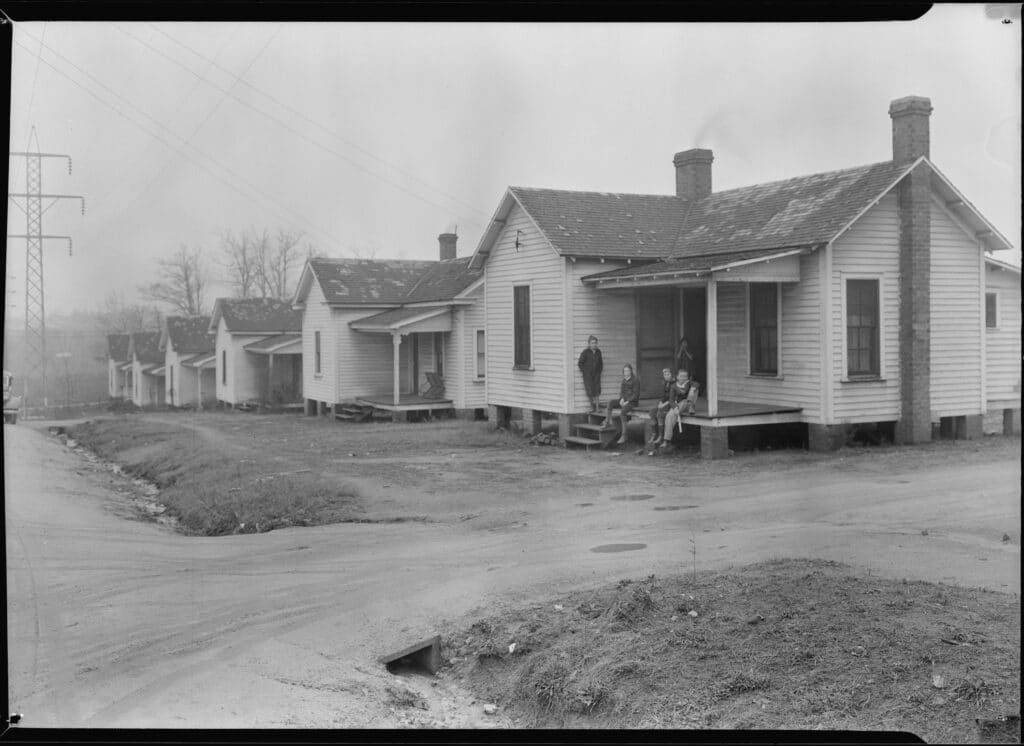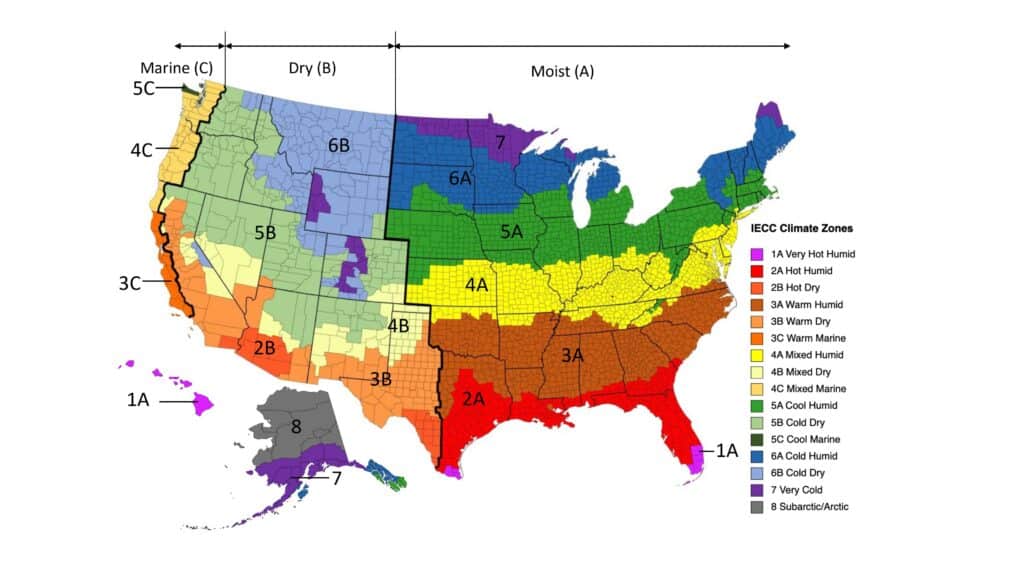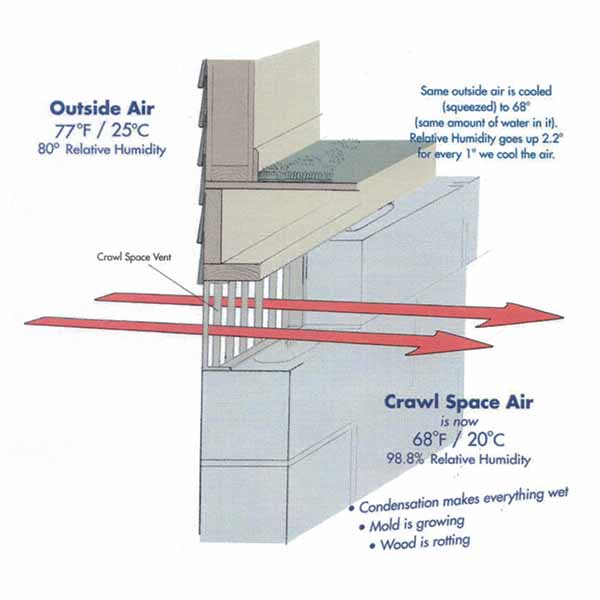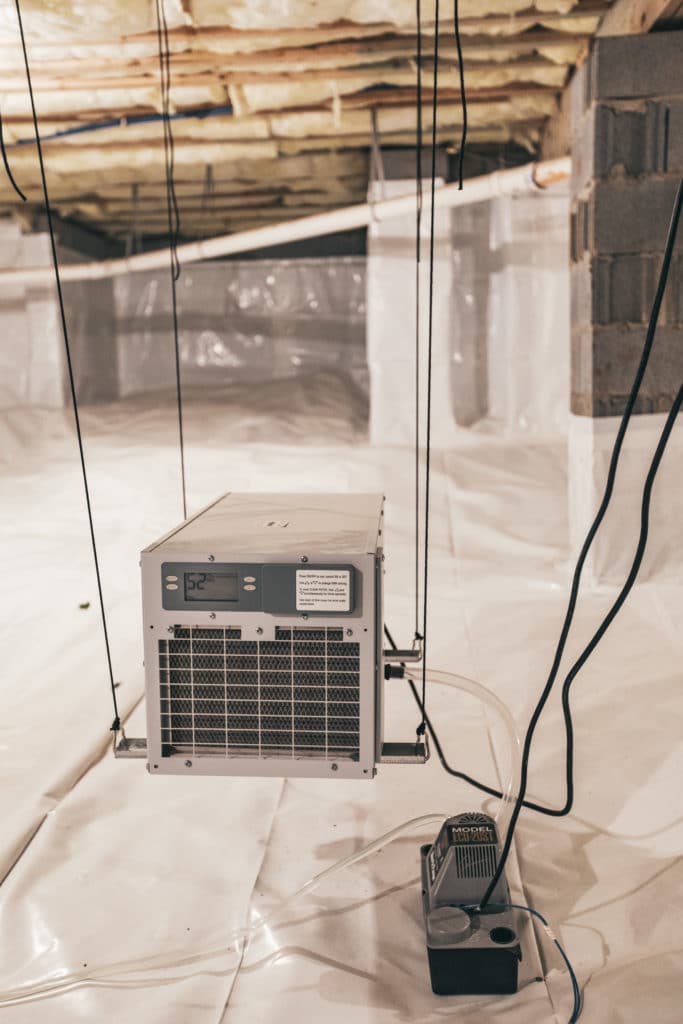TL;DR
Ventilated crawl spaces were once standard in home construction, especially in humid southern regions. But modern research shows they often introduce more moisture than they remove — leading to mold, poor air quality, structural damage, and higher energy costs. Crawl space encapsulation, which involves sealing vents, installing vapor barriers, and controlling humidity with a dehumidifier, is a proven long-term solution. While it requires a greater upfront investment, encapsulation protects your home’s integrity, improves indoor air quality, and significantly reduces long-term maintenance costs.
FAQ – Crawl Space Encapsulation vs Ventilation
Is a ventilated crawl space bad for my home?
In humid climates, yes. While ventilation can help in dry regions, it typically introduces more moisture than it removes in areas like the Southeast, leading to mold, rot, and structural issues.
What is crawl space encapsulation?
Crawl space encapsulation is a moisture control solution that seals your crawl space with vapor barriers, insulation, and a dehumidifier. This prevents outside air and moisture from entering, improving air quality and energy efficiency.
How much does crawl space encapsulation cost?
Encapsulation typically ranges from $5,000–$15,000, depending on the size of the space, materials used, and any drainage systems or sump pumps required. It’s a long-term investment that helps avoid costly damage.
Will encapsulation lower my energy bills?
Yes. By regulating temperature and humidity, encapsulation reduces the strain on your HVAC system. Many homeowners see 15–30% savings on energy bills.
How do I know if I need encapsulation?
If you notice musty smells, high indoor humidity, mold growth, or sagging floors — or if your home is in a humid region with a vented crawl space — it’s worth scheduling a crawl space inspection.
This article was written by our team at Crawlspace Medic of the Upstate in Greenville, SC.
The health of your home’s crawl space plays a vital role in the structural integrity and overall health of the home. When it comes to keeping a crawl space free from moisture issues, fungal growth, and structural deterioration, homeowners often find themselves pondering the decision between ventilated or encapsulated crawl spaces. In this post, we will explore the pros and cons of both options and determine which is preferable depending on your region and climate.
The History of Crawl Space Construction

Crawl Spaces have been the traditional choice for construction in the United States since the 19th century. According to an article published in the Building Safety Journal, Dr. Nathan Yost states that this is especially true in the southern regions where soil moisture and termite infestations led builders to elevate homes several feet above the ground. Due to the decreased cost of construction, crawl spaces began to gain popularity in many areas of the country in the 1940’s & 50’s.
During this time, the first building codes recommended ventilating crawl spaces as well as installing vapor barriers. This was in response to various reports of moisture issues like buckling floors, dry rot, and fungal growth. This setup involves the use of vents to allow air circulation between the crawl space and the external environment. This provided a noticeable improvement over enclosed “hotbox” crawl spaces with trapped, humid, and stagnant air.
In climates where external dew points remain consistent with, or lower than, crawl space dew points year-round (think dry regions like Arizona), this setup was and continues to be relatively effective. The added circulation of dry outside air, the reduction of concentrated soil gasses, and the comparative affordability of construction lend themselves to an overall cost-effective approach to controlling crawl space moisture levels.
The Problem with Ventilated Crawl Spaces
There are many limitations and numerous disadvantages to a ventilated crawl space that can lead to overall health issues for the crawl space and home. This is especially true in humid regions like the Southeast (See Figure 1).
Research done by organizations such as the Building Safety Journal, Building Science Corporation, and the U.S. Department of Energy shows that “vented crawl spaces located in mixed or hot-humid climates tend to increase the moisture level within the space instead of keeping it drier” (U.S. Department of Energy). These crawl space issues have been documented by these organizations, among many others:

(Figure 1) (Reference: 2021 IECC – International Energy Conservation Code)
Introduction of High Humidity Levels
There is a vast difference between the temperature in the crawl space and the outside air temp. Humidity levels can skyrocket in a ventilated crawl space. Think of it this way: the higher the outside temperature is, the more moisture there is in the air. Crawl space temperatures can be anywhere from 15-20°F cooler in the summer months than outside temperatures. Therefore,
When the temperature reaches 80% relative humidity at 85°F – the outside temperature will quickly become humid with lots of accompanying condensation.

(Figure 2) (Credit: Home & Commercial Inspections)
Poor Indoor Air Quality
Due to the pressure difference between the crawl space and living space, the air is drawn from the exterior environment into the lowest level of the home (the crawl space) in a process known as the stack effect. This is where the air mingles with the moisture present in the crawl space, as well as mold spores, and soil gasses. This air is then drawn up into the living space, causing a decrease in air quality and potential health issues.
According to a study completed on 238 North Carolina homes by Duke University, 19% of the homes demonstrated transmission of mold spores from the crawl space into the living space of the home. There is up to a 60% air exchange between the crawl space and the living space. Due to the rising humidity levels; crawl space constructed homes with poorly installed ground coverings and no internal moisture control systems were plagued by the effects of this excessive moisture, mold growth, and decreased HVAC efficiency.
Crawl Space Moisture Damage
Due to the introduction of outside humidity (detailed above), poorly installed ground covers, and lack of drainage and moisture control systems, ventilated crawl spaces in humid regions are plagued by the effects of excessive moisture. Corrosion of HVAC equipment, deterioration of insulation, rotting of the floor structure, fungal and mold growth, and decreased HVAC efficiency are just a few of the consequences of high moisture over time in a crawl space.
Closing and Conditioning a Ventilated Crawl Space: Crawl Space Encapsulation
In order to combat the issues caused by ventilated crawl spaces, conditioning the crawl space through a process called encapsulation was developed. The design of encapsulation is to protect a crawl space from the effects of moisture by eliminating its sources and actively controlling humidity levels through the installation of a dehumidifier. While more costly than a ventilated crawl space, the prevention of moisture damages can greatly reduce costly repairs over time.
A study completed by the Building Science Corporation found that “Unvented, conditioned crawl spaces with insulation on the perimeter perform better in terms of safety and health (pest control), comfort (warm floors, uniform temperatures), durability (moisture) and energy consumption than passively vented crawl spaces with sub floor insulation” (Building Science Corporation).
Encapsulation Process
- Prevent moisture from entering the soil by installing a full coverage vapor barrier on the ground, staked down and waterproof-taped at the seams.
- Mitigate moisture by installing a vapor barrier on foundation walls and wrapping masonry piers. Alternatively, a closed-cell spray foam may be installed as a moisture-block for the walls.
- Block air by sealing the foundation vents (if the crawl space was originally ventilated).
- Actively control humidity levels by installing a permanent, commercial-grade, crawl space dehumidifier.
- Ensure batt insulation is securely in place between all floor joists. Or, as mentioned in #2, install closed-cell spray foam insulation, or foam board insulation (with integrated vapor barrier), on the interior of the foundation walls. This functions as both an insulator and moisture block against the foundation walls (see IRC for R-value requirements for your climate zone).
- If necessary, control the flow of rainwater and groundwater intrusion into the crawl space through the installation of an interior drainage system, with a sump pump discharging collected water away from the home.

Invest in Crawl Space Encapsulation
Crawl space construction has evolved greatly over the course of the last century as construction practices have improved and more widespread understanding has developed regarding the effects of moisture dynamics in crawl spaces. The International Residential Code (IRC) has adopted conditioned crawl spaces as an accepted method of construction, in addition to ventilated crawl spaces. However, new homes with ventilated crawl spaces are continually being constructed in humid regions (in much higher numbers than conditioned crawl spaces), with little to no consideration taken for the well-documented adverse effects of unmitigated high moisture levels over time. While this cheaper construction practice is still implemented, homeowners will continue to grapple with moisture-related damages over the life of the home. If you have a home with a ventilated crawl space, it is pertinent to consider moisture control through encapsulation as a profitable investment in the health of your home.
Schedule an inspection today with a reputable foundation contractor to determine if your crawl space is healthy and dry.

